If you’re responsible for preparing someone’s funeral, you will likely be tasked with choosing the clothes that they will be wearing during the services and burial.
You will need to take different considerations depending on the type of funeral chosen and the burial method. While funeral directors can provide some guidance during this time, it will ultimately be up to you to decide how to dress the deceased.
Depending on who you are caring for, they might have many of their final wishes already set. It is common for the elderly to have their last wishes in order, along with their will or estate, and have an outfit set aside. With unexpected deaths, you may find yourself in an unfamiliar closet with minimal guidance.
In this article, we cover the specifics of choosing clothing for the deceased, including considerations to take and restrictions you may need to follow.
Clothing for the Deceased – What you Need to Know
Informing you about the process of dressing your loved one for a funeral is usually the funeral director’s role. While this approach is generally consistent across the industry, some aspects can vary or impact your responsibilities.

How do funeral homes prepare bodies for burial?
The human body starts to decompose soon after a person dies. This is why most U.S states require preservation of the deceased if burial does not occur within 24 to 48 hours. Following death and the transport of a body to a funeral home, there are many steps involved in preparing the deceased for burial. These can include:
- Discussion between the funeral director and the family about their preferred process (e.g. burial or cremation, open or closed casket). The deceased may also have left instructions for their after-death care
- Standard check of vital signs
- Bathing and disinfecting the body, including washing the hair or shaving the face if needed
- Massage of the limbs and joints to prevent rigor mortis and stiffening
- Cleaning of the teeth and gums
- Trimming of the fingernails which can appear lengthened from dehydration
- Using a cloth or scarf to set the face – this ensures that the eyes and mouth remain shut
- Restoration of any visible injuries or deformities
- Embalming of the body if required
- Dressing of the deceased
- Refrigeration of the body in preparation for viewings or the funeral service
What is embalming?
Embalming is a process that aims to delay decomposition of the human body after death. This is typically performed by qualified funeral home staff and occurs shortly after the arrival of the deceased. There are two main methods to embalm a body, both of which involve the replacement of body fluids with formaldehyde and embalming chemicals:
Cavity – Draining and filling of the abdomen and chest
Arterial – Replacement of blood in the arteries with embalming fluid
These techniques will preserve a body for about a week, after which decomposition will continue at a slower pace. It is important to note that embalming is not essential, and is mainly used when there will be viewings or if the body is being transported over long distances.
Who dresses the deceased?
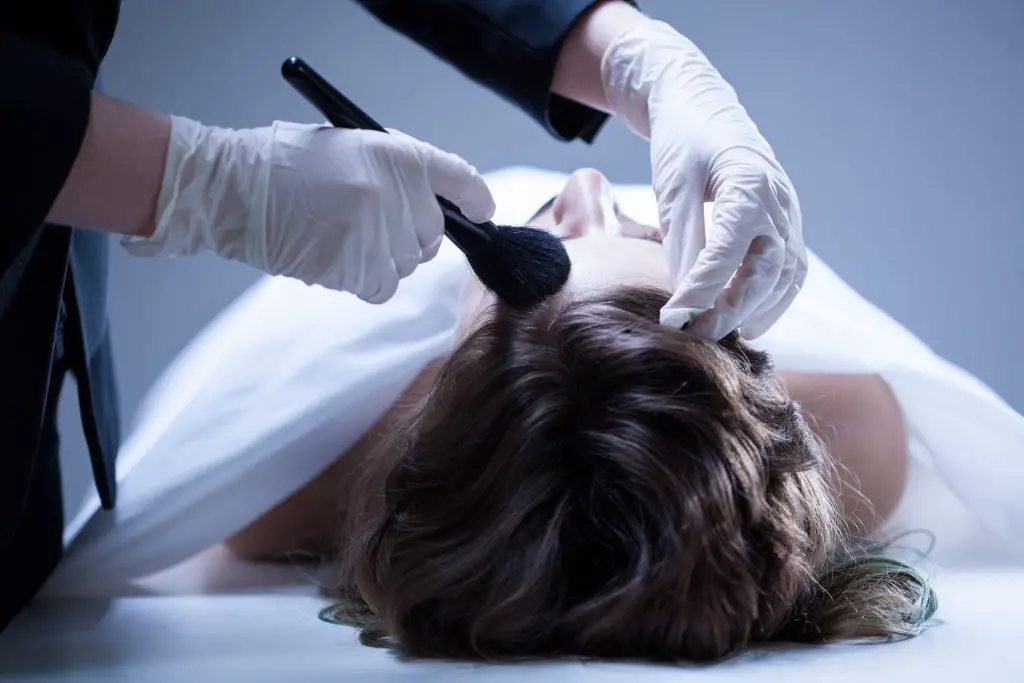
This depends on the operations of the funeral home. Smaller establishments may mean that the funeral director also acts as the mortician or embalmer, that is, the person who handles preparing the deceased for burial. In larger businesses, the roles are carried out by multiple team members.
An exception to this is where certain cultural or religious traditions are followed. For example, the Islamic faith requires that family members wash and dress the body with a sheet or shroud before burial.
Who is responsible for choosing the burial outfit?
The next of kin or living spouse is usually tasked with picking how to dress the deceased. If legal documentation exists, then an individual will be allocated this responsibility along with planning the funeral.
Is the clothing worn during the funeral returned?
If an item of clothing has sentimental value then it is not recommended that you select this as the funeral outfit. In many instances when dressing the deceased, the clothing is cut from behind to fit better.
An exception to this applies to the retrieval of jewelry. Some families ask for jewelry to be worn during the funeral service but request that items are returned before burial or disposition. Ensure that you clarify this with the funeral home in advance.
Should I provide shoes with a burial outfit?
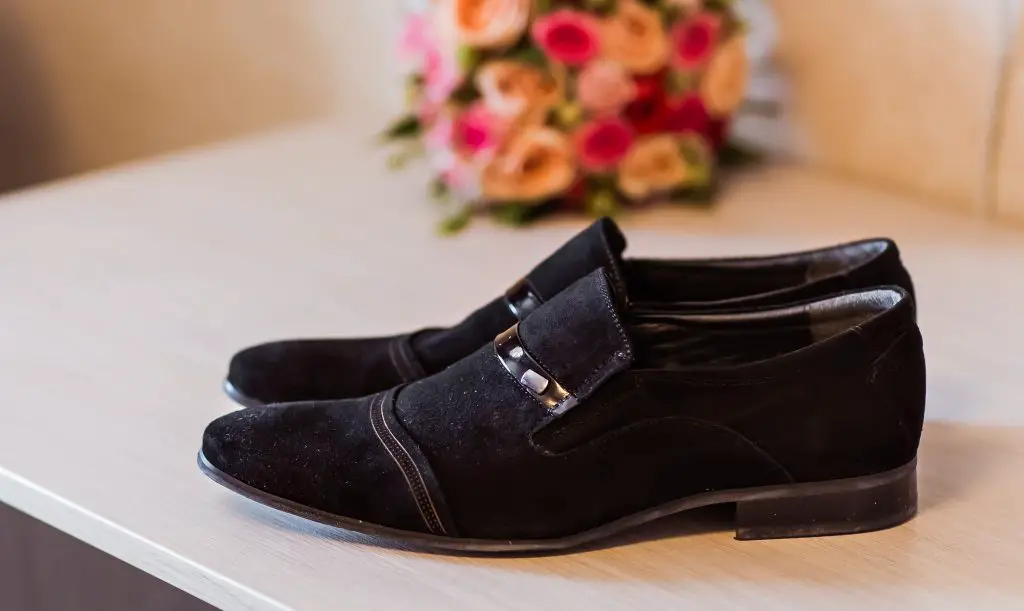
This is usually not recommended as footwear is not visible during a viewing (only the top half of the casket is open). It can also be hard to place shoes on the deceased as the body is often rigid and swollen. Note that bottom layers of clothing such as trousers or skirts are still required, as they can be seen even with half the casket open.
Should I provide undergarments?
While these items are not visible at a viewing, it is recommended that you supply undergarments along with the burial outfit. This ensures that the deceased is farewelled with dignity in the same manner in which they lived. Don’t worry if you forget to provide some undergarments, as most funeral homes will keep a supply on hand to use when dressing your loved one.
Can I place personal effects with the body?
It is usually fine to place mementos or personal effects inside the coffin. For example, grieving parents may place their child’s favorite toy next to the body or include items such as photographs or a Bible.
The deceased also may have requested to be buried with some personal items or jewelry (such as a wedding band). While this can be accommodated, there are some restrictions that may apply if the body is being cremated. The funeral director will be able to advise if there are potential issues.
Choosing Burial Clothing & Guidelines

What to consider when picking burial clothing?
If an outfit isn’t already provided for you, you will have to make a decision based on a variety of factors:
- Material restrictions (discussed below)
- Religious or cultural requirements
- Age
- Personality
- Body condition such as weight or scars
In the first instance, the context of the funeral service should be considered. If there will be an open casket, then it is important to select the right clothing that is suitable for the circumstances and formality of the farewell. Where there are no viewings and a closed casket then you may choose an outfit that is most reminiscent of your loved one.
A general rule of thumb is to pick something that the deceased would themselves wear to a funeral, noting age appropriateness. While most burial clothing is on the semi-formal side, recent funeral trends have diverted away from tradition. Loved ones of the deceased have opted for more personalization – such as casual t-shirts, sports jerseys, work or military uniforms, and even wedding gowns. It’s important to note that there is no hard rule as long as you feel that the clothing reflects and pays tribute to the person.
Practical considerations to make when dressing the deceased
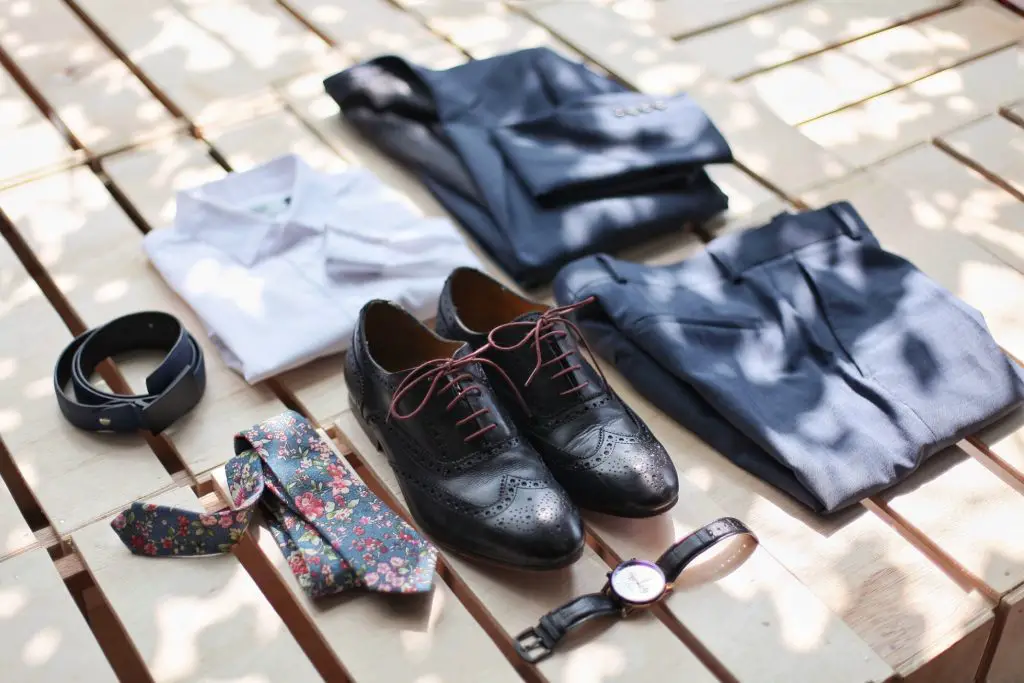
- Avoid tight clothing such as jeans as a corpse, particularly one that is unembalmed, can be quite rigid and display skin slippage or sloughing upon contact
- Pick items that are larger than usual to accommodate the swollen abdominal region which sometimes occurs after an autopsy
- Death or prolonged illness can change the shape of a body. Consider if the deceased will still fit items in their wardrobe
- Opt for long-sleeved tops as embalming fluid can cause the skin on the arms to appear blotchy
- Tops that cover the collarbone are preferred as this area can look quite hollowed after death
- Avoid sheer or lacy material as any sutures may be visible through the clothing
- Consider coordinating the garments with the color of the casket and floral arrangements
- Jewelry is optional but you may want to provide something for sentimental or cultural reasons (e.g. a Catholic rosary). Be mindful that necklaces are best adorned when standing up and can move around when laying flat
Sample list of burial clothing to provide
- Long-sleeved top or dress
- Pants or skirt
- Preferred cosmetics such as lipstick or nail polish
- A photo as a reference for hair and makeup
- Hair dye, wig, hat, or hairpiece
- Scarves or ties
- Glasses or prosthetics if worn
- Undergarments (e.g. underwear, vest, bra, stockings or socks, slips)
- Jewelry or watch
- Other items to be placed in the casket
What type of burial clothes for babies?
For stillborn or premature infants, regular baby clothing may be too large. If an infant dies during a hospital stay, a bereavement gown may have already been provided by a chaplain, counselor, or random volunteers. If the death is unexpected, the pressure to decide on their only outfit can be overwhelming. Many funeral directors will be willing to help navigate the planning process.
There are also some non-profit agencies such as The Littlest Angels Gowns or stores that specialize in preemie clothing. They will provide custom burial clothes for a baby’s funeral.
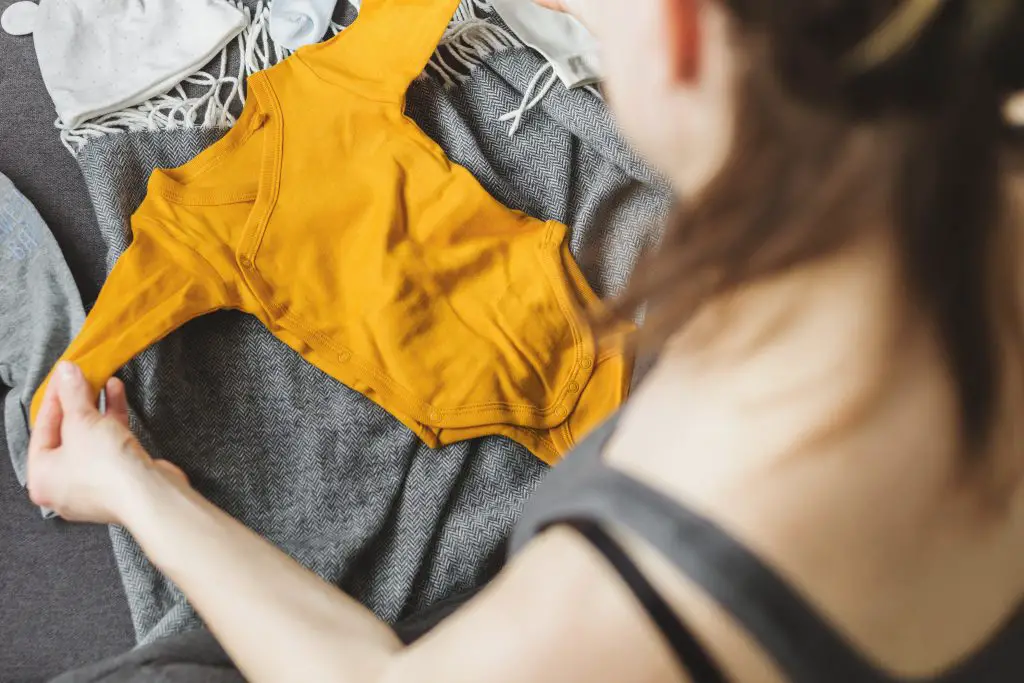
What type of burial clothes for children?
Young people who know they will die due to a terminal illness or other circumstances sometimes pick out outfits that reflect their personality and interests. Depending on their age, you may want to consider less formal but more appropriate attire based on what they enjoyed. Some parents have opted to bury their child in their school uniforms in tribute to their youth.
What is a burial gown?
A burial gown or shroud is a garment used to dress the deceased. This is an alternative option for loved ones to consider if they are having trouble with picking funeral clothes. One key advantage of a shroud is that they are adjustable, with slits and drawstrings across the back. This is particularly helpful when the deceased no longer fits the clothing in their wardrobe (e.g. if they lost a lot of weight due to illness).
Modern burial gowns are made of natural fibers and resemble robes or dressing gowns. Funeral homes can provide a selection of colors and fabrics for bereaved families to choose from.
Types of Burials and Material Restrictions
Burial clothing has different requirements depending on the method of disposition chosen. You may need to double-check clothing tags and textiles before making a final decision.
What type of burial clothes for a traditional funeral?
A traditional, full-service funeral is offered by most funeral homes and is a popular choice. It includes a viewing or visitation, funeral service, procession, and burial.
The individual will be buried in either a traditional coffin, vault, or tomb. Because of this method, you can dress the deceased as you wish and can include various textiles, materials, jewelry, and accessories.
What type of clothing is for a green burial?
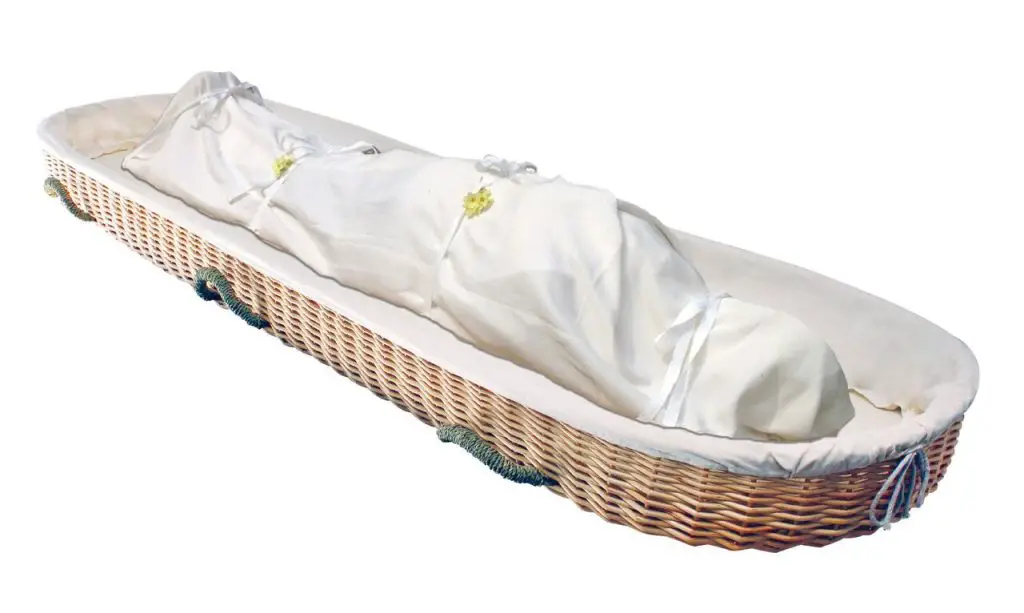
A green burial is a process that does not inhibit the natural rate of decomposition, but instead complements it. When following green burial requirements, the body is not cremated or prepared with any chemicals such as embalming fluids. It is buried within a biodegradable coffin or shroud and, ultimately, allowed to return to nature.
There are specific clothing guidelines you must follow to ensure you’re adhering to the requirements of a green burial. Clothing should be entirely biodegradable and made of untreated natural materials such as wool or cotton. You cannot include clothing with artificial accessories such as metal zippers, buttons, elastic waistbands, etc.
The Green Burial Council covers many of the questions people have about the process. If the individual did not have any clothing fitting the requirements, you could follow two different routes. You can buy new clothing for the deceased, or a burial gown (or shroud) can be made from a natural material.
What type of burial clothes for a cremation?
There are two different types of cremation: traditional and direct. If you have arranged a traditional cremation with a funeral home, there will be a viewing, services, and cremation afterward. You will be providing the clothing the deceased will be dressed in during this process.
Direct cremation does not include viewing services. Typically, people are cremated with a sheet or in the clothing they arrived in at the crematory. If requested, most funeral homes will allow the family to dress their loved ones before direct cremation.
Not all clothing and accessories can be placed in the crematorium. Specific materials can be combustible or pose a risk to the cremation chamber and surrounding equipment. These materials include:
- Electronic components such as pacemakers and hearing aids
- Clothing made of synthetic materials, traditionally dangerous to burn
- Treated leather and rubber (such as on shoe soles)
- Metal and any piercings
- Plastic
- Glass
The Cremation Resource has a plethora of information on the cremation process, both about the process itself and scientific facts.
What is the Customary Burial Clothing in Different Religions?
If the deceased individual was religious, their funeral and burial service will most likely be heavily based on the traditions they followed. Specific religions have requirements on how the service is conducted, while others may have requirements regarding how to dress the deceased.
Catholicism
Catholics prefer more formal burial clothing as it is viewed as respectful. This is consistent with the dress code expected of those attending Sunday mass. An acceptable outfit for men may include a shirt or suit, while a woman may adorn a blouse or classic dress.
Buddhism
Buddhists are buried in non-formal clothes that they would wear every day. This reflects their value of equality. In certain denominations of Buddhism, they will dress the dead in white to symbolize virtue.
Muslims
Islamic faith follows a different regiment, which requires the body to be buried almost immediately after death. The deceased are typically prepared and washed by family members. Men are dressed in a three-sheeted shroud, women in a shroud and veil, and their hair is styled into three braids.
Jehovah’s Witnesses
Jehovah’s Witnesses do not have a clear doctrine for the dress standards of their deceased. The family will usually choose a semi-formal outfit that is kept modest.
Judaism
Jewish individuals are traditionally buried in a white shroud made of simple, traditional fabric such as linen. If the deceased is a man, he should also have a yarmulke on his head, also known as a skullcap.
Hinduism
Hindus follow specific rites when preparing a body after death. Family members will clean the deceased and shave the head, before using herbs and scents to anoint their loved one. The deceased is dressed in clean clothing and wrapped in a shroud. Their thumbs and toes are then tied together to ensure the limbs are held in place.
Guidance
Deciding how to dress the deceased can be a confusing and challenging process as you recall their personality and how they chose to live their life.
If you find yourself with questions and no answers, you should consult the funeral director to determine your next steps – after all, it is their job to assist in times like these.
How to Dress the Deceased FAQs

Do I have to buy new clothing for the deceased?
No this is not required at all unless it is your preference. You can choose from the clothing already owned by the deceased. An exception to this occurs in some cultures which require the body to be buried in a cloth shroud. This is usually purchased by the family in preparation for the funeral.
What happens to the clothes people are buried in?
The burial outfit will decompose along with the body. The rate of deterioration depends on the type of material, with natural fibers such as cotton, silk, and wool breaking down quicker. Synthetic fibers such as polyester and nylon will remain intact for many years. This is further influenced by moisture conditions within the grave and whether the deceased was embalmed for preservation.
Why aren’t people buried in the clothing that they die in?
A person is rarely buried in the clothing that they died in as the outfit is unlikely to be suitable for a funeral. The circumstances of death mean that bodily fluids or environmental elements may have soiled the clothing. The funeral home will usually return the clothes worn at death if requested by the family.
Are people buried with underwear?
Yes, the funeral home or mortician will generally ensure that the deceased is buried wearing underwear. While this is not visible beneath burial clothing, it is a practice that extends dignity and respect to the dead. This also serves the extra function of retaining any bodily fluids that may leak during decomposition.



![What Does a Headstone Cost? [7 Key Buyer Questions] How much is a headstone](https://funeralcircle.com/wp-content/uploads/2020/10/Home-page-categories-2.png)
![Can You Wear A Hat To A Funeral? [Must Knows] Can You Wear A Hat To A Funeral?](https://funeralcircle.com/wp-content/uploads/2023/02/Home-page-categories-1-2-240x200.png)

